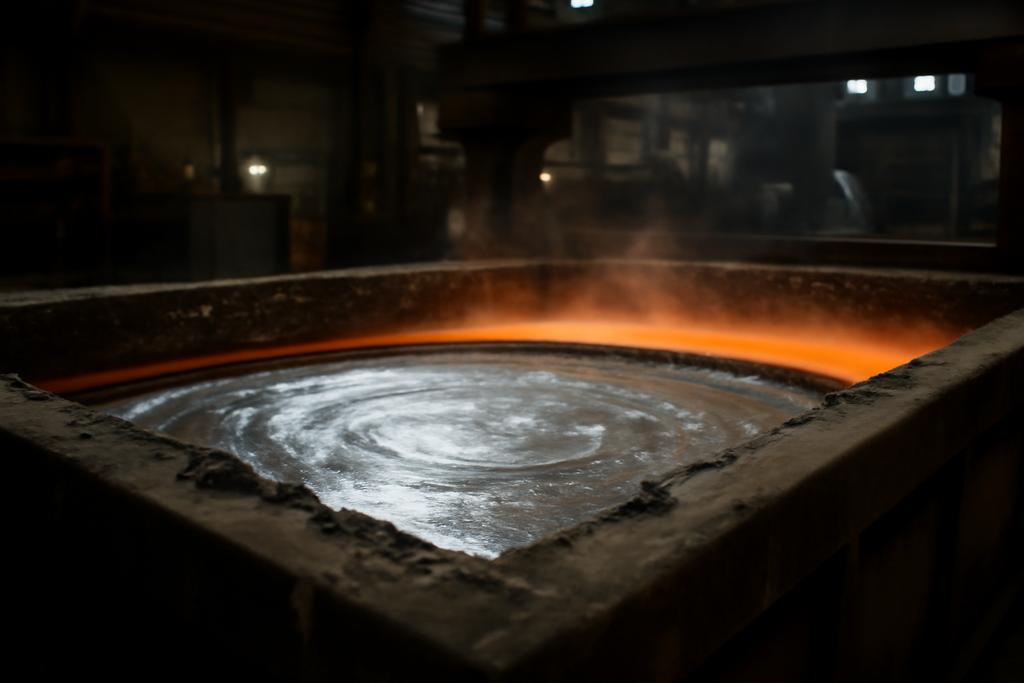The Metal Pad Roll Instability: A Dance of Liquids and Magnetism
Imagine a giant cauldron, humming with electrical energy, where molten aluminum rests beneath a layer of cryolite – a mineral bath essential for aluminum production. This seemingly simple setup, at the heart of the Hall-Heroult process, hides a surprisingly complex instability: the metal pad roll (MPR). The MPR is a sloshing, rotating motion in the molten aluminum, driven by a subtle interplay of electric currents and magnetic fields. It’s a phenomenon that, if unchecked, can short-circuit the entire process, wasting energy and disrupting production.
The Sele Parameter: A Measure of Instability
For over 50 years, scientists have understood the MPR’s existence, but pinpointing exactly *when* it occurs proved elusive. A key parameter emerged: the Sele parameter. This value, essentially a ratio of electromagnetic forces to gravitational forces, indicates the likelihood of instability. A higher Sele parameter means a greater risk of the MPR, causing the aluminum to slosh wildly and potentially wreak havoc on the production line. However, the exact threshold at which this instability occurs depended on various factors, notably the cell’s geometry and the damping effects of viscosity and magnetism.
A New Theoretical Model: Capturing the Complexity
Researchers at the Helmholtz-Zentrum Dresden-Rossendorf and LIMSI, CNRS, have developed a new theoretical model to predict the MPR instability with unprecedented accuracy. Lead researcher Gerrit Maik Horstmann and his colleagues tackled this long-standing challenge by creating a model that’s both comprehensive and approachable. Unlike previous models that relied on simplifying approximations, this new model incorporates capillary effects and, crucially, meticulously accounts for the stabilizing influences of viscous and magnetic damping.
Beyond Shallow Waters: Accounting for Damping
Previous models often used the ‘shallow-water’ approximation, assuming the liquid layers are thin compared to the cell’s width and length. This simplification, while suitable for many industrial-scale aluminum reduction cells, falls short when applied to smaller setups like liquid metal batteries or scaled-down laboratory experiments. Horstmann’s team’s model moves beyond this limitation, providing accurate predictions even for deep liquid layers.
Furthermore, the model precisely calculates the damping effects of viscosity and magnetism—factors that significantly impact the stability threshold. This advance is critical for accurately modeling the behavior in a wider range of scenarios. Accurate calculations of these damping effects have proven remarkably difficult, yet the researchers have derived explicit analytical formulas that are both elegant and easy to implement. These improvements enable much more precise predictions of when the instability will occur.
A Fractal Pattern of Instability: Unexpected Order
The researchers’ work revealed another unexpected layer of complexity: the fractal nature of instability in rectangular cells. In the absence of damping, rectangular cells become inherently unstable at specific, mathematically defined aspect ratios (the ratio of width to length). These ratios aren’t randomly distributed but follow a fractal pattern—a never-ending repetition of similar patterns at different scales. This unexpected mathematical structure highlights the intricate relationship between geometry and instability. Even with damping, the fundamental fractal structure persists, influencing the overall stability behavior.
Experimental Validation: A Long-Sought Benchmark
A major obstacle in validating MPR models has been the difficulty in directly observing and measuring interface motions in the high-temperature environments of aluminum production cells. However, the researchers leveraged recent experimental advances, including the rediscovery of a previously overlooked experiment using stratified, low-density liquids, which allowed a more direct investigation into the MPR threshold. This experiment, conducted by Borisov et al., offered crucial validation points for the new model. The model successfully aligns with the experimental observations, demonstrating its improved accuracy and predictive power.
Implications: Towards More Efficient and Sustainable Aluminum Production
The development of this new theoretical model has significant implications for the aluminum industry. A better understanding of the MPR instability allows for more precise control over the aluminum production process. The ability to predict instability thresholds accurately enables engineers to optimize cell designs, minimizing energy loss and maximizing production efficiency. Given that aluminum production consumes a substantial portion of the world’s electricity, these optimizations are crucial for achieving more sustainable industrial processes. The model’s applicability extends beyond aluminum production, offering a powerful tool for understanding similar magnetohydrodynamic instabilities in other systems, such as liquid metal batteries — a promising technology for energy storage.
Future Directions: Continual Refinement and Expansion
While the model represents a significant advance, the research team acknowledges further work is needed. Further validation using their own newly developed experimental setup, which allows for direct measurements of growth rates and damping rates under controlled conditions, will provide further refinement and verification. Extending the model to encompass the more complex three-layer systems found in liquid metal batteries is another promising avenue for future research. The insights gained from this work pave the way for more efficient and sustainable approaches to aluminum production and energy storage.










